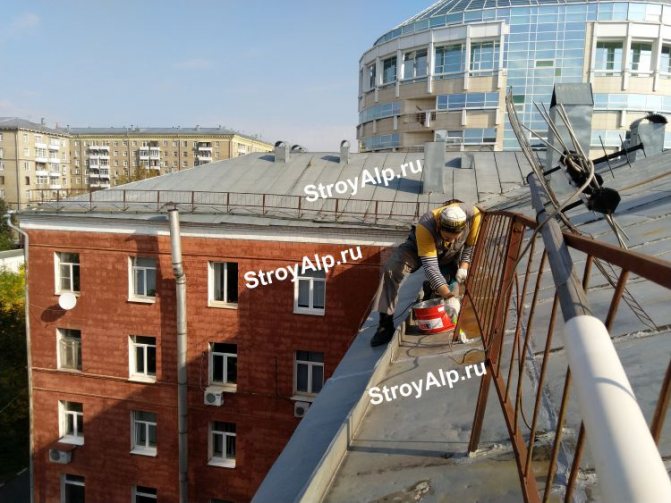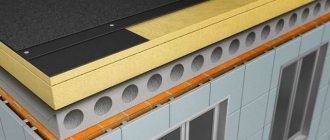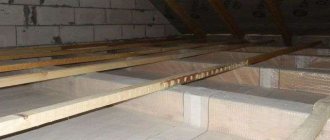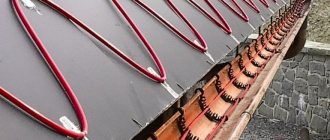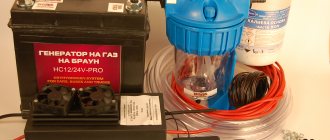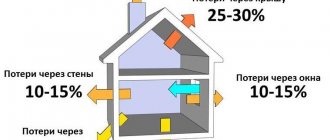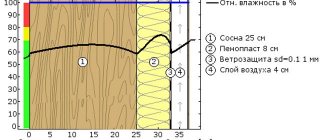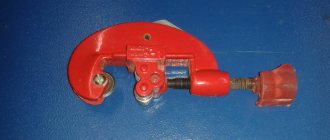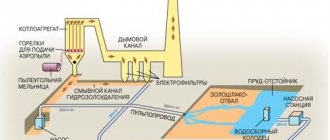Sealing roof folds - from 140 rubles. per m.
10.12.2019
Modern technologies and equipment have made it possible to establish the production of high-quality products for seam roofing. Smooth joints, reliable locks make it possible to obtain a good and reliable roof covering. But for 100% waterproofness, proper sealing of the roof folds is required.
| The use of support systems for such work is not always practical. The assembly and dismantling of scaffolding, the use of scaffolding towers or attachments requires a significant investment of time and money. In this case, it is more profitable to order the services of industrial climbers in Moscow. |
When it is required to seal the seams of a folded roof
| Sealing seams and joints on seam roofs avoids moisture penetration under the sheet metal sheets. This protects all structural elements of the building from destruction by water. |
Get advice by phone
+7 (495) 997-24-50 Request a call
When it is necessary to carry out waterproofing work:
- Separate metal sheets with a special joining system have long been used for roofs with a low slope. Previously, gutters were made by hand. The fastening of the canvases to each other was carried out using a special seam - a fold. It was produced using conventional tools. This technology did not allow a completely sealed coating to be obtained. Old roofs require periodic repairs and sealing of the joints on the roof.
- Coatings made of modern materials are largely devoid of the drawbacks that arose during the handicraft production of sheets. For additional sealing, special sealing gaskets are laid in the folds. But over time, they can also leak at the joints of the canvases. This is often due to the use of poor quality materials. An important role is played by professional installation and adherence to the technology of laying a metal roof.
- Violation of tightness is also possible in the places where sheets adjoin pipes, ventilation shafts, pipes. Double folds are more resistant to moisture. Single seams are less reliable and require additional sealing.
- Folds can diverge and leak due to improperly positioned battens. Unprofessional removal of snow and ice from the roof also often leads to a violation of the construction of the joints.
| Industrial climbers can quickly and efficiently seal the seams of a seam roof. Availability of professional equipment, high-quality materials, experience in high-altitude work allows you to restore the tightness of the metal coating on the roof in a short time, without significant costs. The cable harness to secure the worker can be attached to any type of roof. |
The cost of roof sealing works
The price of roof sealing depends on the volume and complexity of the work, the total area of the roof covering, and the type of roof. In some cases, it is advisable to carry out parallel work to eliminate minor defects, and only then sealing the seams and joints.
Professional roofers of our company carry out work on roof sealing by the method of industrial mountaineering on buildings of any height. You can find out the nuances of the provision of individual services, the cost of sealing metal roofs, bituminous roofs, etc. You can call or send an application form from the site.
| Type of work | Unit meas. | price, rub. |
| Primary sealing (Vilatherm + sealant) | n.m. | from 120 |
| Secondary sealing without opening the seam | n.m. | from 200 |
| Secondary sealing with opening the seam | n.m. | from 300 |
| Other types of sealing | n.m. | negotiable price |
Basic rates are indicated. The exact cost will be indicated in the estimate documentation.
Choice of materials
The correct selection of materials for sealing joints from galvanized smooth sheets or other types of metal plays an important role in the tightness and durability of the coating. It is made depending on the place of repair. Special sealing tapes and roofing mastics are used here.
Materials are exposed to high temperature extremes, prolonged exposure to moisture and UV rays. They must be resistant to vibration loads, compression when securing the folds. Sealing is usually done with bitumen or polyurethane based compounds.
| Butyl rubber or bitumen sealants are characterized by increased adhesion to metal, good resistance to moisture. Materials must be inert to atmospheric precipitation. The mastics are suitable for flat or ribbed surfaces. They completely fill the gaps in the joints and seams of the roof. |
- Oxyplast is a two-component white polyurethane sealant. Cold curing mastic is suitable for sealing roofing, interpanel joints. Differs in good adhesion to metal, brick, wood, concrete, glass, plastered surfaces. It is characterized by increased elasticity, the ability to paint with various paints.
- TechnoNIKOL-45 is a cold curing butyl rubber sealant. The composition of white or gray is characterized by high elasticity, resistance to ultraviolet radiation, fast drying time. It can be used for a wide range of operating temperatures. Designed for waterproofing and sealing joints and seams of various building structures. Suitable for protecting metal from corrosion.
- Sazilast - surfaces can be insulated at temperatures from -15 ℃ to + 40 ℃.
- One-component polyurethane sealants.
- Sealing tapes
| Self-adhesive tapes (one and two-sided) are popular. They are useful for perfectly smooth surfaces. |
When sealing folds, silicone compounds are sometimes used. They are able to withstand abnormal temperatures. But silicone isn't flexible enough. If the metal expands strongly, it can be damaged. In addition, silicone compounds often provoke cloth corrosion.
| Professional waterproofing materials and high quality sealants are produced both abroad and by domestic enterprises. When choosing, you should give preference to well-known brands and brands. |
Types of roofing sealants
Manufacturers of building and finishing materials offer a fairly large selection of sealing compounds that differ in both functionality and cost.
Silicone compounds.
The most common type of sealant. It is used in almost all areas of construction and repair, both in the private sector and in industry. Moreover, for different types of sealing work, compositions are produced that differ from each other, depending on the task at hand. A special outdoor roofing sealant is used to seal the roof.
Silicone sealants are distinguished by high adhesion to all surfaces, due to the fact that silicon is used for their production. These are one-component formulations produced in tubes, therefore they are ready for immediate use with a special pistol. Key benefits of silicone-based sealants:
- High adhesion to any surface.
- A wide range of operating temperatures, from +60 C to - 40 C, which is especially important when sealing a roof made of corrugated board, which has the peculiarity of quickly heating up in the sun to high temperatures and also quickly cooling down at night.
- The high elasticity of the silicone allows the joints to avoid cracks during thermal expansion and contraction of the roofing material at any time of the year.
- UV resistance makes silicone sealant nearly ideal for roof sealing.
- The low price, availability and long service life have led to the widespread use of this material in sealing corrugated roofs.
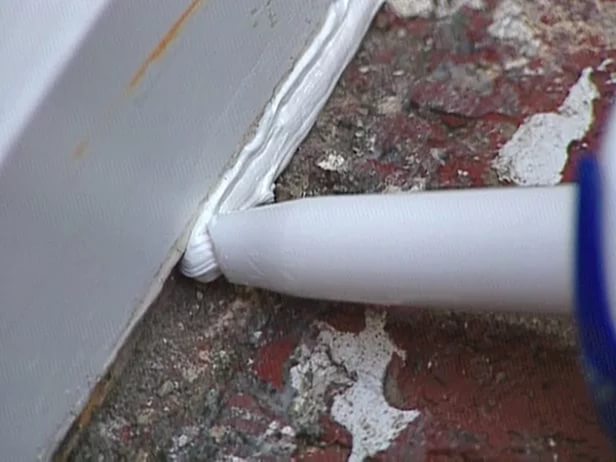
Silicone sealant application
Thiokol or polysulfide sealant.
It is made on the basis of bituminous masses. It is not a good option for use on corrugated roofs, although it is used quite often, due to its low cost. After hardening, which is possible at any temperature, it loses its elasticity. It is for this reason that on metal roofs made of corrugated board it is prone to cracking during thermal expansion of the material.
Manufacturers recommend using this sealant at the joints of the roof with walls and chimneys, that is, when one of the surfaces is stationary. In this case, the declared service life is 15 years. The use of thiokol sealant is impractical between the sheets of the profiled sheet, both of which will "play" from temperature and wind loads. With this method of use, the material will collapse very quickly and cease to fulfill its main function. It is much more effective to use such a sealing compound on roofs made of solid materials, for example, slate or tiles.
Attention! When using thiokol sealant in roofing works, it is recommended to apply it in stages, in several thin layers, making it possible for each layer to harden a little for several hours. With this method, the material will dry out evenly and gain strength faster, which will increase its service life.
Some of the advantages of thiokol sealant are still present:
- High resistance to mechanical stress.
- Absolute immunity to any atmospheric conditions.
- Large operating temperature range: from - 50 C to +140 C.
- Decent service life up to 15 years.
- Polyurethane sealant. It is a type of polyurethane foams used to seal cracks in building structures. The material also has a foam structure and, like foam, has impressive adhesion to all surfaces. A significant disadvantage of this sealant is its susceptibility to ultraviolet radiation. Under the influence of sunlight, it gradually collapses and loses its functional properties.
Recently, however, manufacturers have modified the composition of the polyurethane-based sealant. New, two-component mixtures, thanks to the addition of special substances, allow them to be used in any open spaces without worrying about the quality of the sealing.
Another type of polyurethane sealant is liquid mixtures. They are applied with a regular brush, paint roller or spray gun. Thanks to the uniform layer of the resulting coating, the sealing is thorough and reliable. Such a layer is not afraid of water, moisture, ultraviolet radiation and other weather phenomena. Its service life is on average 20 years.
At the moment, polyurethane sealants are the most effective way to seal corrugated roofs. The only drawback of this material is its relatively high cost compared to other options. However, do not forget that this is a relatively new development and as it spreads, the price will inevitably decrease. Main pluses:
- High resistance to water vapor, precipitation, mechanical damage and chemically active substances.
- Ease of application and high curing speed.
- Possibility of staining without special preparation.
- Excellent thermal insulation properties.
- Long service life.
Acrylic sealant.
These formulations are made on the basis of water and natural materials. That is why, during operation, they show impressive resistance to adverse weather conditions in any conditions. To seal the roof made of corrugated board, a special frost-resistant sealant for outdoor use is used. Such a composition has increased moisture resistance and exposure to ultraviolet rays. In addition, the composition has excellent adhesion and paintability.
However, the acrylic sealant also has some disadvantages. It is short-lived due to its specific chemical composition. Every 3 to 5 years, such a sealant must be replaced, because during this period it cracks and crumbles. Also, the material is not designed for use at temperatures below 15 C. Therefore, its use is possible only in southern latitudes.
Siliconized acrylic sealant
Not so long ago, a siliconized acrylic sealant appeared on the construction market.
It's still the same material, but with the addition of silicone. This composition has some of the properties of silicone and acrylic sealants. It is plastic, can be easily painted with any paints, but it is still afraid of low temperatures.
The advantages of using acrylic sealant are as follows:
- Thanks to its derivatives from natural materials, it is environmentally friendly.
- Easy to paint, prime and putty.
- Excellent resistance to all weather conditions and UV radiation.
- Quickly gains operational strength.
- Convenient and economical to use.
- Sealing butyl rubber tape. This material is produced in the form of rolls of various thicknesses and widths. Developers and contractors are increasingly using such tape to seal the roof from the profiled sheet. Variations with one and two adhesive sides allow the tape to be used both for sealing sheet-to-wall joints and for overlaps.
The sealing tape is very convenient to use, while being quite reliable and durable. It is enough to remove the protective membrane from the adhesive side, place it on the required joint and press down slightly from above.
Due to the composition of butyl rubber, the material can be operated at temperatures from -60 C to +90 C. Excellent adhesion of sealing tapes is achieved by using modern polymer materials in the adhesive base.
It may be noted that there are also butyl rubber compounds on the market that can be applied with a spatula. In terms of performance, they are similar to sealing tape, but due to the method of application, they are inferior in practicality and economy. Let's summarize the advantages of butyl rubber tape:
- The convenience of use.
- Resistant to precipitation, water vapor, ultraviolet radiation, chemical attack.
- Good elasticity.
- Increased adhesion to any dry surfaces.
- Short hardening time.


Sealing Butyl Rubber Tape
Conclusion
Thus, the correct choice of sealant for corrugated roofing is quite a responsible matter. A competent solution to this problem will significantly improve the operational characteristics of the roof of the structure, extend the service life of the corrugated board, insulation for the attic floor and maintain a comfortable microclimate in the house in any bad weather.
Work technology
| Careful adherence to the technology for performing waterproofing works guarantees reliable sealing of the roofing, 100% elimination of leaks for a long time. |
Stages of carrying out:
- Inspection of the place of work, preliminary determination of the scope of repair, selection of materials and tools.
- Preparation of the roof surface - the coating must be cleaned of dirt, dust, old sealant, degreased materials from galvanized steel or other metal using a solvent.
- If there are foci of corrosion, the metal must be cleaned.
- Laying sealing tape in joints and seams. To improve the adhesion to the metal surface, it is worth pressing the edges of the tape with a roller.
- In dangerous places where there is an increased likelihood of moisture getting under the coating, it is necessary to reinforce with fiberglass.
- Spreading the gaps with mastic is done with a special pistol or brush.
| When sealing the roof abutment, strict adherence to the application conditions and temperature conditions indicated by the manufacturer of the waterproofing material is necessary. The vast majority of materials are not applied to a damp surface. |
Carrying out works on sealing the roof folds will be a good option if the roof covering itself is in a satisfactory condition. When repairs are required to metal roofing sheets, sealing is a temporary solution to the problem of leaks.
Sealing of roof junctions to walls and technological shafts
It is impossible to achieve perfect adhesion of the roofing to walls, ventilation shafts, skylights. To eliminate cracks, it is necessary to seal the joints.
| Small gaps are eliminated with gaskets, tapes. Then it is coated with waterproof mastics and sealants. |
If the embedment area is quite large, then a waterproofing apron is required. This is true for the places of abutment to the walls of the building, around the chimneys. At the joints of the openings of the roof windows, a multilayer insulating seam is made.
Roof joint sealing technology
The choice of roofing today is extremely wide - from affordable corrugated board to piece bitumen shingles, and the repair of each type of roof is carried out using a special technology using a special sealant.
When performing work on sealing cracks, the following are used:
- Viscous based sealants
- Sealing tapes
- Roof seals
1. Liquid sealants
Liquid sealants, in turn, can be silicone, acrylic, polyurethane, bituminous. It should be noted right away that acrylic sealant is not used to seal the roof due to its low elasticity.
- The silicone roofing sealant is ideal for outdoor roofing applications - it is UV and temperature resistant.
- Polyurethane sealant is suitable for minor roof repairs, it is also used for sealing seam roofs.
- Bituminous mastic is another type of sealant used primarily for sealing soft tile roofs.
- Polymeric sealant is the choice of professionals when sealing corrugated joints, however, when working with corrugated sheets, bitumen tape with aluminum is also used.
2. Sealing tapes
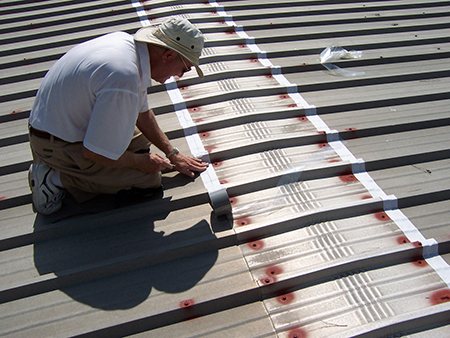

Butyl rubber sealing tapes are an effective and economical way to seal roof abutments. They have undeniable advantages:
- UV and low temperature resistant
- High elasticity (does not crack, does not harden)
- Durability
- Ease of installation
- Wide range of tapes
Tape KISO-358 is suitable for sealing joints of roofing sheets, for fixing roofing films and other heat-insulating materials.
KISO-501 is suitable for sealing the space between roofing material and chimney, as well as for minor repairs.
Transparent adhesive tapes are used to seal polycarbonate seams.
3. Roof seals
Rigid and soft roof seals protect the under-roof space from precipitation, dust and dirt.Fastening is carried out at the junctions of the roof elements and at the joints.
Sealing a roof made of metal tiles with the help of rigid seals is practiced quite often, because they exactly repeat the shape of the profile and adjoin the metal tile without the formation of gaps. Depending on the type of wave, the profiles can be forward and backward. Rigid seals are also used at the joint between the ridge, at the junctions.
Soft seals take any shape, therefore they are considered universal. These seals have good porosity and provide good ventilation. The soft seal is self-adhesive.
Roof sealing technology can be different depending on the condition of the roof:
- with the removal of the old coating layer;
- with partial opening of the seam;
- without dismantling the roofing;
- with full roof insulation.
Roof sealing materials.
In different cases, different materials are used to seal metal roofs. Guerlain sealing tape is very often used. But the Guerlain tape has two significant drawbacks: - A perfectly flat surface is needed for high-quality gluing of the sealing tape. - The sealing tape is a patch on the surface of the roof, and if such a patch is torn off, for example with a shovel when cleaning the roof from snow, the roof will leak there.
Sealing mastics do not have the same disadvantages as sealing tapes. Sealing mastic does not need an ideal application surface, the sealant can be applied to both smooth and ribbed surfaces. Mastics fill all small cracks and niches in the joints and folds of the roof. Even if the surface layer of the sealant is torn off with a shovel when cleaning the roof from snow, a sealing layer will remain inside the seam and there will be no roof leakage.
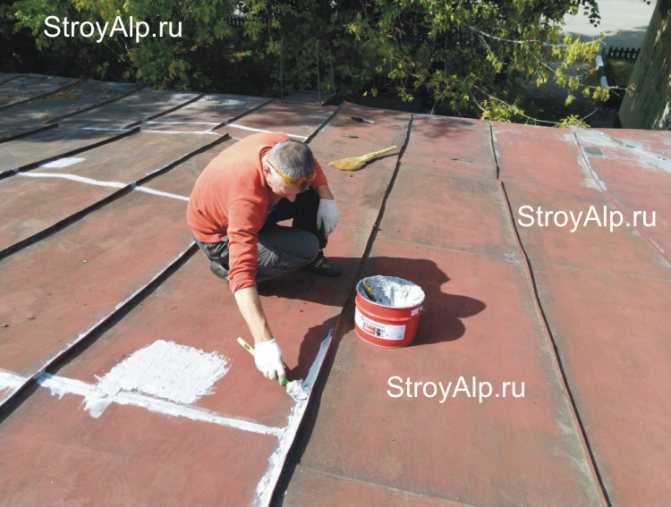

UP
Slate roof repair.
The slate roof must be repaired with care, since the material is not durable. For more convenient movement on the slate, use a special ladder - a ladder. In principle, the repair of a slate roof is not very difficult, it all comes down to the fact that it will be necessary to cover up cracks and chips on the slate itself. The putty is a cement mortar made of sand and cement. Sealing the joints of slate roofing can be done in another way - this is the use of a special material Abris S-LTf. The sealant will also be an assistant. It is very simple to do this, clean the place where there is damage (use gasoline or white spirit), remove the protective paper from the desired piece of tape and glue it to the damaged area. It is covered with non-woven material or foil, which allows it to be easily dyed.
Sealing seam roofing: basic prices.
- Pressing the folds of the roof - from 30 rubles. per meter; - Sealing of roof folds - from 70 rubles. per meter with materials; - Cleaning the roof from debris in gutters and folds - from 30 rubles. per meter; * The cost is given for a roof with a slope up to 30% with a fence.
Roof sealing on steeply pitched roofs without fencing requires constant suspension of the safety cables. The very process of waterproofing a roof with a steep slope is also difficult. Therefore, the prices for sealing a steep roof may be slightly higher than for a flat roof.


To draw up a general cost estimate, specialists first inspect the condition of the roof covering of a structure or building and determine the best ways to seal the roof to create a high-quality coating with good protective characteristics. Then the technology of roof repair or roof sealing is developed. The price of roof repairs largely depends on the quality of materials and repair technology.
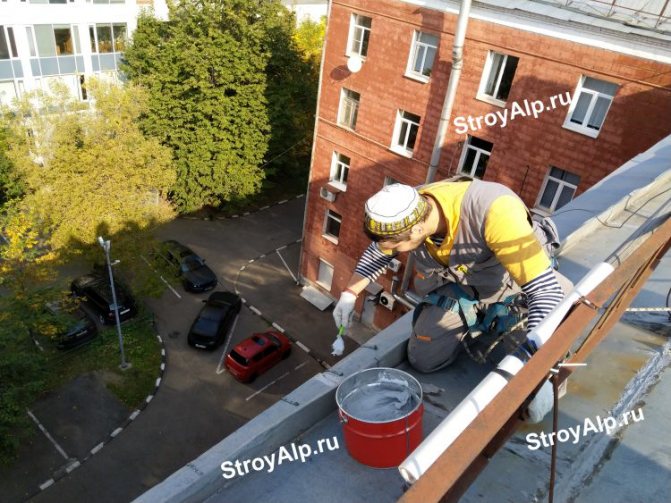

UP
Self-repair of the roof.
The reason for the appearance of cracks on natural tiles or cement-sand tiles is in changing weather conditions (temperature drops) unequally expanding and contracting parts of the roof, which are joined with antennas and pipes. As a result of this, a leak occurs. The damaged area can be eliminated by strengthening the structure of the roof itself. With a special solution of sand and lime with the addition of tow, and cover cracks and chips on the tiles. Or use a professional sealant.
